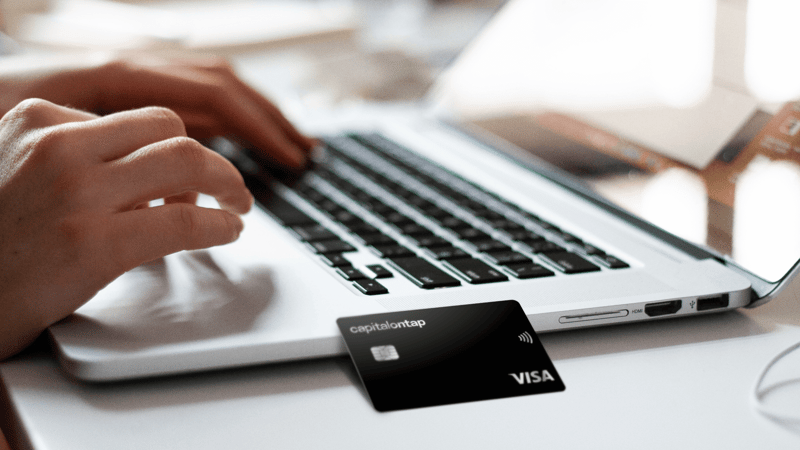Jump to a section
Deciding on how you’re going to price your goods or services as a small business is tough. Price too high, and you might be pricing out and putting off potential customers. Price too low, and customers might question the quality of what you've got to offer. Additionally, your profit margins might not be high enough to keep your business afloat.
Definition of pricing in marketing
Pricing in marketing refers to the process of determining the value of a product or service and setting a price that will enable a business to generate revenue and profit.
How to determine the price of a product involves analyzing the costs involved in producing and distributing the product or service, researching the market and competitors, and considering various pricing strategies to determine the optimal price point.
The price of a product or service can have a significant impact on customers’ behavior, and therefore pricing decisions are a crucial element of your business’s marketing strategy.
What are pricing strategies?
Pricing strategies are the approaches that businesses use to set prices for their products or services. Using pricing strategies can help you to determine the best way to price your products or services depending on your goals and target market.
As a small business owner, it’s important that you understand pricing strategies and how they can help you determine the optimal price point for your product or service that will generate revenue and profit while remaining competitive in the market.
What is a winning pricing strategy?
A winning pricing strategy allows small business owners to remain competitive and generate revenue and profit. A good pricing model will not only cover your costs but also help you convince customers to buy your product or service, show its value, and give customers confidence that it's worth the price:
Convinces your customers to buy
- Your target market
- Your target market’s purchasing behavior
- The perceived value of your product or service
You should focus on setting a price that reflects the value of your product or service and resonates with your target market. A good pricing approach should also be flexible, and allow you to adjust your prices in response to changes in the market, and customer demands or expectations.
Shows the value of your product or service
Your pricing should also show the value of your product or service. It's important to understand that setting a low price is not always the best strategy. Customers may perceive a low price as an indication of low quality, and a high price as an indication of high quality.
A good pricing model will highlight the benefits and features of your product or service, and how it meets the needs of your target market. This means that small business owners need to focus on highlighting the unique features and benefits of their product or service and demonstrating how it solves their target market's needs or problems.
Give confidence to your customers
Customers want to feel that they are getting a fair deal and that the price they pay reflects the value they receive. A good pricing approach should be transparent, providing clear, upfront pricing information and avoiding hidden fees or charges. By setting a fair and reasonable price and backing it up with exceptional customer service, small business owners can build long-term relationships with their customers, leading to increased sales and profitability.
What is a weak pricing strategy?
A weak pricing strategy is one that doesn't effectively position your product or service in the market. It will have a negative impact on your business's bottom line, as customers may not see the value in what you're offering or may feel uncertain about the purchase decision. A weak pricing model can also result in targeting the wrong audience, meaning you're not reaching the people who are most likely to buy your product or service.
A weak pricing strategy:
Doesn't reflect the value of your product
One of the biggest problems with a weak pricing strategy is that it fails to reflect the value of your product or service. This means that customers may not be willing to pay the price you're asking, as they don't see the value in what you're offering.
As a small business owner, it's important to consider the features, benefits, and unique selling points of your product or service and set a price that reflects its value. Avoid setting a price that is too high or too low, as both can be detrimental to your business's success.
Makes your customers uncertain
Another issue with a weak pricing strategy is that it can make your customers uncertain about their purchasing decision. If your pricing approach is unclear or inconsistent, customers may question the quality of your product or service, and may even feel like they're being ripped off.
To avoid this, it's important to be transparent about your pricing and to provide clear information about what customers can expect. Make sure to clearly communicate any discounts or promotions, and avoid hidden fees or charges that could cause confusion or distrust.
Targets the wrong audience
A weak pricing strategy may be targeting the wrong audience. If you're not reaching the people who are most likely to buy your product or service, you're wasting valuable time and resources.
As a small business owner, it's essential to understand your target market and to price your products accordingly. This means conducting market research, analyzing customer data, and testing different pricing strategies to find the approach that works best for your business. By targeting the right audience, you can increase sales, build customer loyalty, and achieve long-term success.
Types of pricing strategy
Pricing strategies are not a one-size-fits-all approach. Finding the right type of pricing strategy can be a daunting task, as it depends on various factors such as the type of business, the product or service offered, and the target audience. However, getting it right can make all the difference when it comes to revenue and profitability.
A carefully selected pricing approach can help you set your business apart from its competitors and appeal to customers, leading to increased sales and brand loyalty. So how do you decide how to set your prices? From penetration pricing to loss-leading, here are some common pricing strategies that you could use to maximize profits and capture your customer base:
Competitive pricing
Competitive pricing involves pricing your products or services in line with the prices offered by your competitors. This approach is best suited to businesses operating in highly competitive industries, where customers are price-sensitive and have a lot of options to choose from.
By offering similar prices to your competitors, you can attract customers who are looking for a good deal, while at the same time avoiding the risk of pricing your products too high and losing customers to your competitors.
However, it's important to ensure that your pricing strategy still allows for profits and doesn't lead to a race to the bottom.
Value-based pricing
Value-based pricing is a strategy that involves pricing your products or services based on the perceived value they offer to customers, rather than simply matching the prices of your competitors. This approach is best suited to businesses that are able to differentiate themselves based on factors other than price, such as quality, convenience, or unique features.
By understanding what your customers value most about your products or services, you can set prices that reflect the benefits they provide. This allows you to capture a higher share of the market, while also avoiding the need to constantly adjust prices in response to changes in the competitive landscape.
To be successful with value-based pricing, you must have a deep understanding of your customers and be able to communicate the unique value your products or services offer in a compelling way.
Cost-plus pricing
Cost-plus pricing is best suited to businesses where the quality of the product or service is more important to customers than the price as it involves adding a markup to the cost of producing a product or providing a service to determine its selling price.
By using cost-plus pricing, businesses can ensure that they cover their costs and generate a profit, while also providing customers with a fair and transparent pricing model. This pricing method is commonly used in industries such as manufacturing, construction, and professional services, such as accounting or consulting.
Penetration pricing
Penetration pricing is often used by start-ups or businesses that are introducing a new product to the market. It involves launching your product at a lower price point than your competitors in order to attract customers and gain market share. By offering a more affordable option, you can entice customers away from the competition and establish your brand in the market. Then, once the brand is established, prices can be increased.
In the longer term, it’s a successful way of increasing market share, so long as you are prepared to make lower profits (or potentially losses) in the short term.
Price skimming
Unlike penetration pricing, where you enter the market with a low price, price skimming, or high-low pricing as it’s sometimes known, involves starting at a high price point, typically seen in the technology industry.
The logic behind price skimming is that highly desirable, innovative products can be sold at a premium price point, allowing the business to recoup development costs and maximize profits from early adopters. As competitors enter the market, the price can be gradually lowered to maintain a competitive edge and continue capturing market share.
The success of price skimming relies heavily on having a new, unique, and desirable product. To achieve those high prices, you must offer something truly special to your target audience.
Economy pricing
Economy pricing is a model that involves offering products or services at a low price point, with the aim of attracting price-sensitive customers. This approach is best suited to businesses operating in industries where customers are highly sensitive to price, such as supermarkets. Generic grocery items are products that don't have a brand name, like an own-brand washing-up liquid instead of Fairy Liquid. Supermarkets often sell these items at a lower price than brand-name products.
By keeping costs low and offering products at a lower price than competitors, businesses can appeal to customers who are looking for a bargain. However, this strategy may not be suitable for businesses that rely on high-profit margins or for products that are perceived as high-quality or luxury items.
To make economy pricing work, you must be able to operate efficiently and keep costs low, while still maintaining the quality of your products or services.
Dynamic pricing
Dynamic pricing is also known as time-based pricing, surge pricing, and demand pricing. Businesses that use dynamic pricing adjust the prices of goods or services based on various factors, such as demand, competition, and market conditions.
It is often used in industries such as hospitality, travel, and e-commerce, where prices can change frequently based on supply and demand. For example, flights are more expensive during the school holidays as the demand is higher.
By implementing dynamic pricing, these businesses can optimize their revenue and profitability by charging higher prices during periods of high demand and lowering prices during periods of low demand.
Freemium pricing
Freemium pricing involves offering a basic version of a product or service for free while charging a premium for advanced features or additional services. This pricing model is commonly used in software, mobile applications, and online services.
The freemium pricing strategy is best suited to businesses that offer a product or service with a low marginal cost of production, where offering a free version can attract a large number of users and provide a pathway for monetization through premium upgrades or add-ons. Think Spotify and Spotify Premium.
Hourly pricing
Hourly pricing, or rate-based pricing, is a pricing model commonly used by consultancy, freelance, and contracting businesses. When hourly pricing is used, businesses charge for their goods or services based on the amount of time spent providing them.
Hourly pricing allows businesses to adjust their rates based on various factors such as the complexity of the work, the level of expertise required, and the time involved. By doing so, businesses can optimize their profitability by charging higher rates during periods of high demand and lowering their rates during periods of low demand.
Project-based pricing
Project-based pricing is the opposite of hourly pricing as it is when a business sets a fixed fee for a specific project or service, regardless of the amount of time spent on it. This approach is often used by businesses that provide services such as graphic design, marketing, or consulting.
By using project-based pricing, businesses can provide a clear and transparent fee structure to their clients and eliminate any concerns related to hourly billing or unexpected costs. This approach allows clients to budget for a project and ensure that they receive the services they require within the agreed-upon price.
Premium pricing
Premium pricing, sometimes known as prestige or luxury pricing, involves setting higher prices for goods or services than competitors in the same market.
This approach is often used by businesses that offer high-quality products or services and want to position themselves as luxury or exclusive brands, such as designer clothing brands like Chanel.
By using premium pricing, businesses can create an image of superiority, exclusivity, and higher value in the minds of customers. Customers may be willing to pay a premium price for a product or service that they perceive as being of superior quality.
While premium pricing may limit the size of a business's customer base, it can result in higher profit margins, increased brand loyalty, and a better overall perception of the business. However, it's important for businesses to maintain a consistent level of quality to justify the premium price, and to ensure that their pricing aligns with their target market's expectations.
Bundle pricing
Bundle pricing is a pricing strategy that involves offering several, usually related, products or services for sale as a package or ‘bundle’, at a discounted price. Meal deals sold in supermarkets or broadband and landline packages are examples of bundle pricing.
By using bundle pricing, businesses can increase their sales volume by incentivizing customers to purchase more than one product or service at a time. Customers may be more likely to purchase a bundle of products or services if they believe they are receiving a better value than if they were to purchase each item separately.
Psychological pricing
Psychological pricing is a pricing strategy that uses specific pricing techniques to influence customer psychology. For example, charging $9.99 instead of $10 is a common psychological pricing technique that can create the perception of a lower price.
If used correctly, psychological pricing could be an effective way for you to influence your customers’ behavior and increase sales. However, it's important that psychological pricing is used ethically and transparently, and that you ensure customers are not deceived or misled by pricing tactics.
Geographic pricing
Geographic pricing involves setting different prices for the same product or service based on the geographic location of the customer, taking into account local market conditions, shipping costs, and competition.
For example, in the USA and Europe, Uber charges a premium price for its rides due to higher operating costs and competition from other ride-hailing services, like Lyft or Bolt. However, in India, where the cost of living and local competition is lower, the service charges a lower price to remain competitive and attract more customers.
Keystone pricing
Keystone pricing involves setting the price of a product or service at double the cost of production. Keystone pricing is often used by retailers who want to achieve a specific profit margin on their products.
For example, if a product costs $10 to produce, a retailer using keystone pricing would set the price at $20 to achieve a 50% profit margin. Keystone pricing is commonly used in industries such as fashion and consumer goods.
Pricing strategies examples:
Streaming services
Streaming services, such as Netflix and Hulu, offer an example of a pricing strategy known as "value-based pricing." These companies charge a monthly subscription fee that allows users to access a wide range of movies, TV shows, and other content. The pricing is based on the perceived value of the service to the customer, rather than the cost of providing the service.
For example, Netflix has different pricing tiers that offer varying levels of access to its content, with higher prices for more advanced features, such as 4K video streaming. Value-based pricing has been successful for streaming services in the US and around the world, as it provides a predictable revenue stream and encourages customer loyalty.
Freemium services
Freemium services, such as Spotify and LinkedIn, offer an example of a pricing strategy known as "freemium pricing." These companies offer a basic version of their service for free, but charge a premium price for additional features and functionality. The pricing is based on the perceived value of the premium features to the customer.
For example, Spotify offers a free version of its music streaming service that includes ads and limited access to features. It also offers a premium version that allows users to listen to music without ads and access additional features, such as offline listening. This pricing approach has been successful for freemium services as it allows companies to build a large user base and generate revenue from a smaller subset of paying customers who value the premium features.
How to choose the right pricing strategy for your business
Choosing the right type of pricing model for your business can be challenging, but it's essential for your success. Here are some key steps to help you choose the right pricing strategy for your business:
Identify your value metric and value proposition
To choose the right pricing model, you need to identify your value metric and value proposition. Your value metric is the unit of value that you're selling, and your value proposition is the unique benefit that you offer to your customers. Understanding these concepts will help you set a price that reflects the value of your product or service.
Evaluate pricing potential
Next, you need to evaluate the pricing potential of your product or service. This means considering factors such as production costs, market demand, and competition. You should also consider how your pricing will impact your revenue and profitability.
Determine your target customer and segments
To choose the right pricing approach, you need to determine your target customer and segments. This means understanding the needs, preferences, and behaviors of your customers, and tailoring your pricing strategy accordingly.
You may need to segment your customer base based on factors such as demographics, location, or purchasing behavior.
Analyze historical data
Analyzing historical data can help you make informed decisions about your pricing strategy. You should review your sales data, customer feedback, and competitor pricing to identify trends and patterns that can inform your pricing decisions. This data can also help you forecast future demand and adjust your pricing strategy accordingly.
Invest in research and testing
Finally, it's essential to invest in research and testing. This means conducting market research, testing different pricing strategies, and gathering feedback from your customers. By investing in research and testing, you can make informed decisions about your pricing strategy and maximize your revenue and profitability.
Pricing strategy FAQs
What is transfer pricing?
Transfer pricing refers to the process of pricing goods and services between different divisions, subsidiaries, or entities within the same company or group. It is particularly relevant for small businesses that operate across multiple countries or have several subsidiaries.
In the US, transfer pricing rules are designed to ensure that transactions between divisions, subsidiaries, or entities within the same company or group are conducted at arm's length, which means that the prices charged are similar to what would have been charged to unrelated parties. This is important to ensure that companies do not manipulate prices for tax avoidance purposes.
Small businesses in the US should be aware of the transfer pricing rules and ensure that their transactions with related parties are properly documented and priced at arm's length. Failure to comply with the rules could result in penalties and additional tax liabilities. It is therefore important to seek professional advice from your tax advisor if you are unsure about the application of transfer pricing rules to your business.
What is MAP pricing?
MAP pricing stands for Minimum Advertised Price. It is a pricing policy that some businesses or manufacturers use to set a minimum price that their products can be advertised for.
In the US, MAP pricing is not legally required, but it is often used by businesses to ensure that their products are not advertised below a certain price point. This can help to protect the brand's image and prevent price wars between retailers that can damage profits for both the manufacturer and the retailer.
For small businesses in the US, MAP pricing can be useful if you are a retailer selling products from a manufacturer or distributor that has a MAP policy in place. By adhering to the minimum advertised price, you can ensure that you are not undercutting other retailers and maintain a level playing field in the marketplace.
However, it is important to note that MAP pricing does not set a minimum sale price, only a minimum advertised price. Retailers are still free to sell the products for any price they choose, as long as they do not advertise below the MAP price.
What is the pricing curve?
The pricing curve, or curved pricing, is a pricing strategy where a business charges different prices for the same product or service based on various factors, such as the customer's willingness to pay, the quantity purchased, or the time of purchase.
Examples of curved pricing include volume discounts, loyalty programs, dynamic pricing (where prices change in real-time based on supply and demand), and price skimming (where a high initial price is charged and gradually lowered over time).
The goal of curved pricing is to increase profits by capturing more revenue from customers who are willing to pay more for a product or service, while still attracting customers who are price-sensitive. This can be especially useful for small businesses in the US that may have limited resources and need to optimize revenue.
This does not constitute financial advice. If you want to understand your pricing strategy in detail you should speak to your financial advisor or accountant.
Looking to optimize your revenue and improve your cashflow? Let the Capital on Tap Business Credit Card, issued by WebBank, help you out. Earn 1.5% cashback on all your business spending.










